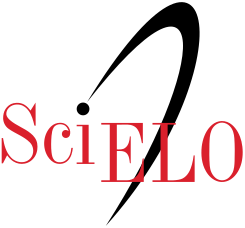Cuando el debate se conecta con el ataque. Presencia del conflicto en el tratamiento informativo de las elecciones federales mexicanas de 2018 y 2021
DOI:
https://doi.org/10.32870/cys.v2022.7841Palabras clave:
Framing, Conflicto, Campaña electoral, Prensa, Televisión, MéxicoResumen
Los medios favorecen el debate político durante las campañas electorales, dando un tratamiento informativo particular a los asuntos relevantes. En esta cobertura destaca el uso del encuadre de conflicto que, aunque suele presentar la política como un ejercicio de confrontación y ataque, también puede mostrarla como un proceso de debate e intercambio de opiniones. Se realizó un análisis de contenido de las noticias de televisión y prensa durante las elecciones presidencial de 2018 y federal de 2021 en México. Los hallazgos confirman la existencia de dos encuadres diferenciados de “conflicto” y de “debate y acuerdo político”, detectándose en ambas campañas la conexión existente entre ambos en la cobertura mediática de las elecciones.Descargas
Citas
Bartholomé, G., Lecheler, S. & de Vreese, C. H. (2018). Towards a typology of conflict frames. Substantiveness and interventionism in political conflict news. Journalism Studies, 19(12), 1689-1711. https://doi.org/10.1080/1461670X.2017.1299033
Bjarnøe, C., de Vreese, C. H. & Albæk, E. (2020). The effect of being conflict non-avoidant: linking conflict framing and political participation. West European Politics, 43(1), 102-128. https://doi.org/10.1080/01402382.2019.1572334
Cohen, J. (1988). Statistical power analysis for the behavioral sciences. Lawrence Erlbaum.
Colvin, R. M., Bradd Witt, G., Lacey, J. & McCrea, R. (2020). The role of conflict framing and social identity in public opinion about land use change: An experimental test in the Australian context. Environmental Policy and Governance, 30(2), 84-98. https://doi.org/10.1002/eet.1879
de Vreese, C. H. (2012). New avenues for framing research. American Behavioral Scientist, 56(3), 365-375. https://doi.org/10.1177/0002764211426331
de Vreese, C. H. (2014). Mediatization of news: The role of journalistic framing. En J. Strömbäck & F. Esser (Eds.), Mediatization of politics. Understanding the transformation of western democracies (pp. 137-155). Palgrave Macmillan. https://doi.org/10.1057/9781137275844_8
Dimitrova, D. V. & Strömbäck, J. (2012). Election news in Sweden and the United States: A comparative study of sources and media frames. Journalism, 13(5), 604-619. https://doi.org/10.1177/1464884911431546
Entman, R. M. (1993). Framing: Toward clarification of a fractured paradigm. Journal of Communication, 43(4), 51-58. https://doi.org/10.1111/j.1460-2466.1993.tb01304.x
Ergün, E. & Karsten, N. (2019). Media logic in the coverage of election promises: comparative evidence from the Netherlands and the US. Acta Politica, 56, 1-25. https://doi.org/10.1057/s41269-019-00141-8
Freidenberg, F. & González Tule, L. (2009). Estrategias partidistas, preferencias ciudadanas y anuncios televisivos: Un análisis de la campaña electoral mexicana de 2006. Política y Gobierno, 16(2), 269-320. http://www.politicaygobierno.cide.edu/index.php/pyg/article/view/205
Galais, C. (2018). Conflict frames and emotional reactions: a story about the Spanish Indignados. Journal of Elections, Public Opinion and Parties, 30(4), 446-465. https://doi.org/10.1080/17457289.2018.1550416
Gerth, M. A. & Siegert, G. (2012). Patterns of consistence and constriction: How news media frame the coverage of direct democratic campaigns. American Behavioral Scientist, 56(3), 279-299. https://doi.org/10.1177/0002764211426326
Gronemeyer, M., del Pino, M. & Porath, W. (2019). The use of generic frames in elite press: Between conflict, neutrality, and an empowered journalist. Journalism Practice, 14(8), 954-970. https://doi.org/10.1080/17512786.2019.1665473
Lengauer, G., Esser, F. & Berganza, R. (2012). Negativity in political news: A review of concepts, operationalizations and key findings. Journalism, 13(2), 179-202. https://doi.org/10.1177/1464884911427800
Lozano, J. C., Cantú, J., Martínez, F. J. & Smith, C. (2012). Evaluación del desempeño de los medios informativos en las elecciones de 2009 en Monterrey. Comunicación y Sociedad, (18), 173-197. https://doi.org/10.32870/cys.v0i18.195
Matthes, J. (2012). Framing politics: An integrative approach. American Behavioral Scientist, 56(3), 247-259. https://doi.org/10.1177/0002764211426324
Martínez Garza, F. J. & Maltos, A. L. (2019). La elección federal en telediarios públicos. Revista Mexicana de Opinión Pública, 14(27), 79-93. https://doi.org/10.22201/fcpys.24484911e.2019.27.68549
Muñiz, C., Saldierna, A. & Marañón, F. (2018). Framing of electoral processes: The stages of the campaign as a moderator of the presence of political frames in the news. Palabra Clave, 21(3), 740-771. http://dx.doi.org/10.5294/pacla.2018.21.3.5
Rodelo, F. V. (2020). Factores antecedentes de los encuadres de juego estratégico y temático en la cobertura de campañas electorales locales en el contexto mexicano. Comunicación y Sociedad, e7643. https://doi.org/10.32870/cys.v2020.7643
Schuck, A. R. T. (2017). Media malaise and political cynicism. En P. Rössler, C. A. Hoffner & L. van Zoonen (Eds.), The international encyclopedia of media effects (pp. 1-19). Wiley. https://doi.org/10.1002/9781118783764.wbieme0066
Schuck, A. R. T., Vliegenthart, R., Boomgaarden, H. G., Elenbaas, M., Azrout, R., van Spanje, J. & de Vreese, C. H. (2013). Explaining campaign news coverage: How medium, time, and context explain variation in the media framing of the 2009 European parliamentary elections. Journal of Political Marketing, 12(1), 8-28. https://doi.org/10.1080/15377857.2013.752192
Schuck, A. R. T., Vliegenthart, R. & de Vreese, C. H. (2016). Who’s afraid of conflict? The mobilizing effect of conflict framing in campaign news. British Journal of Political Science, 46(1), 177-194. https://doi.org/10.1017/S0007123413000525
Semetko, H. A. & Valkenburg, P. M. (2000). Framing European politics: a content analysis of press and television news. Journal of Communication, 50(2), 93-109. https://doi.org/10.1111/j.1460-2466.2000.tb02843.x
Sevenans, J. & Vliegenthart, R. (2016). Political agenda-setting in Belgium and the Netherlands. Journalism and Mass Communication Quarterly, 93(1), 187-203. https://doi.org/10.1177/1077699015607336
Strömbäck, J. & Dimitrova, D. V. (2006). Political and media systems matter: A comparison of election news coverage in Sweden and the United States. The International Journal of Press/Politics, 11(4), 131-147. https://doi.org/10.1177/1081180X06293549
Trussler, M. & Soroka, S. (2014). Consumer demand for cynical and negative news frames. The International Journal of Press/Politics, 19(3), 360-379. https://doi.org/10.1177/1940161214524832
Walgrave, S., Sevenans, J., Van Camp, K. & Loewen, P. (2018). What draws politicians’ attention? An experimental study of issue framing and its effect on individual political elites. Political Behavior, 40, 547-569. https://doi.org/10.1007/s11109-017-9413-9
Descargas
Publicado
Cómo citar
Número
Sección
Licencia
Derechos de autor 2022 Carlos Muñiz

Esta obra está bajo una licencia internacional Creative Commons Atribución-NoComercial 4.0.
Los autores/as que publiquen en esta revista aceptan las siguientes condiciones:
De acuerdo con la legislación de derechos de autor, los autores conservan los derechos de autoría y otorgan a Comunicación y Sociedad el derecho de primera comunicación pública de la obra. Comunicación y Sociedad no realiza cargos a los autores por enviar y procesar artículos para su publicación.
Los autores/as pueden realizar otros acuerdos contractuales independientes y adicionales para la distribución no exclusiva de la versión del artículo publicado en Comunicación y Sociedad (por ejemplo incluirlo en un repositorio institucional o publicarlo en un libro) siempre que indiquen claramente que el trabajo se publicó por primera vez en Comunicación y Sociedad.











